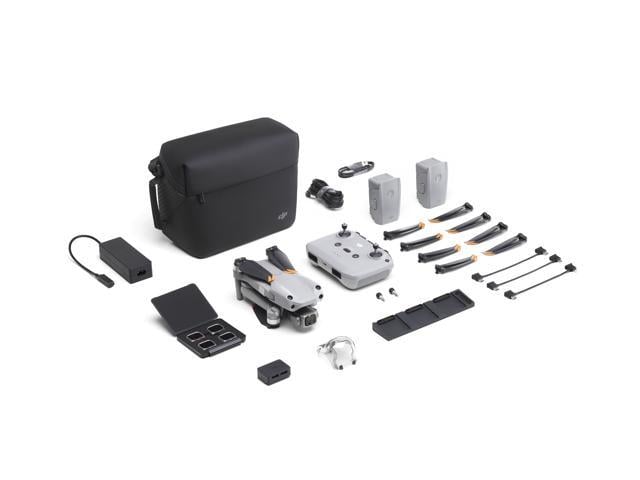Air 2S vs.
Mavic Air 2 - What’s the Difference?
Aside from the name change that is the norm in previous DJI product releases, the newly launched DJI Air 2SS has some significant changes both inside and out. But is it for you, and would it be worth your money to upgrade? Here’s what you can expect with the DJI
Air 2S.
The DJI
Air 2S has pretty much the same dimensions as its predecessors so some accessories may be compatible with each other. It’s slightly heavier at 600 grams, which is probably because of the 1-inch sensor, the biggest upgrade of the
Air 2S over the
Mavic Air 2.
While the
Mavic Air 2 had the half inch sensor, the
Air 2S has the one-inch sensor size 20MP CMOS camera. This sensor size is seen in other DJI drones like the
Mavic 2 Pro and
Phantom 4 and even in the Autel Evo 2 Pro. However, these drones are considered to be professional-level drones and not intended for the prosumer market like the
Air 2S.
The 1-inch sensor allows for better shots in low-light conditions as well as to shoot videos in 5.4k at 30 fps. The
Air 2S can also shoot up 4k up to 60 fps and 1080p at 120 fps. It has also a f/2.8 fixed aperture which should give you more control over your shots.
Another difference between the
Air 2S and the
Mavic Air 2 is the zooming capability. At 5.4k, the
Air 2S can zoom up to three times and up to 8 times at the lowest resolution. This is a big step from the previous version that can only zoom up to six times.
Other smart features and upgrades have been added to the DJI
Air 2S to make it a much more adaptive shooting tool. Among these are the 150 max bitrate of the
Air 2S versus the 120 bit rate of the
Mavic Air 2, and 10-bit D-log over 8-bit of the previous version.
The
Air 2S offers improved Panorama and Timelapse function, the latter of which takes advantage of improved footage in low-light situations due to low-light situations plus the ability to stabilize footage after recording, as well as upgraded functionalities on features like FocusTrack and Quickshots modes.
Three big changes in the DJI Ai2 are Mastershots which, based on available material, may be like the
Air 2S’s version of the DJI Mimo’s Story Mode. APAS 4.0 is a big step when it comes to obstacle avoidance as the
AIr 2S now has additional top sensors that will make flying and utilizing the upgraded ActiveTrack 4.0 that much safer so you can focus more on content creation rather than keeping your bird safely in the air.
Lastly, the DJI
Air 2S has O3 transmission, the upgrade from OcuSync 3.0, that was last seen in the recently released
DJI FPV Drone. With this feature, you can get a transmission range of up to 12km FCC (8km in CE), an honestly insane range that you can probably reach in perfect conditions.
Speaking of range, the good news is that
Mavic Air 2 batteries are compatible with the
Air 2S. Flight time is slightly lower, though, and there is no news whether battery swapping will affect the total flight time. There’s also a rumor that the
Air 2S will be able to provide users with a more immersive flight experience with
FPV goggle and motion controller compatibility, but that has yet to be confirmed.
All in all, I can say that the difference between the DJI
Air 2S and the
Mavic Air 2 is quite impressive, especially with the improved 1-inch camera, ActiveTrack 4.0, OcuSync 3.0, and the new Mastershots mode. I’m sure to upgrade from the
Mavic Air 2 and you should too if you want to create better quality content using the best camera--to-weight/price prosumer drone in the market today. For me, it’s perfect for content creators, aerial photographers on a budget, and for those who travel a lot (sorry
Mini 2!).
Of course,
MA2 is still one of the best drones out there right now so ultimately it’s going to be your choice depending on your needs.
yes, I'm the kind of girl that buys car based on the color ?
don't judge











